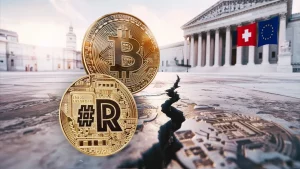By Vahan P. Roth, Co-Founder
Environmental concerns, campaigns and activism are certainly nothing new. However, the “green wave” that we’ve been witnessing over the past few years, that has swept the investment world, regulatory bodies and government spending initiatives, has brought about a tectonic shift that we haven’t seen before. While earnest efforts and good intentions are certainly part of that wave, might there be a better, more efficient and more constructive way to think about sustainability?
Over the last decade, we’ve seen a dramatic escalation in political, social and regulatory efforts focused on combating climate change and protecting the environment. In most advanced economies, this pressure has translated to higher and stricter penalties for polluters, various incentives for “green initiatives” and massive investments in renewable energy projects.
The private sector and the investment world were quick to respond to the public demand and to the regulatory challenges. Some companies made meaningful changes to their business models and production processes. Others, however, chose to “window dress”, to make vague promises and announce ambitious (but non-binding) “goals” or to simply tweak their marketing and branding strategies. This increasingly common practice, also known as “greenwashing”, is sabotaging any progress that honest, effective efforts towards sustainability can help us make, but more worryingly, it is spreading confusion and misconceptions among the general public.
The greenwashing epidemic
There is no shortage of examples that clearly illustrate the kind of tricks being employed by companies that wish to jump on the “green bandwagon” without actually paying for their ticket. Some greenwashing attempts are more sophisticated than others and more tricky to spot. For example, we’ve seen numerous airlines using carbon offsetting schemes, e.g. tree-planting programs, to compensate for the environmental impact of their daily operations. The problem is that too many of these schemes have little to no measurable impact and companies often use assumptions and projections to demonstrate their success, on paper only. Since the average consumer usually only remembers the ads and the corporate pledges, and is unlikely to check how many trees were actually planted in the Amazon and what the precise impact was, it’s easy to see how bad actors could get away with it. Well, that was the case until recently at least, as KLM found out the hard way, after being sued last July by environmental groups for allegedly misleading consumers through adverts claiming that the company’s carbon-offsetting scheme would balance out flight emissions.
However, one doesn’t always need to be an environmentalist sleuth to recognize greenwashing when they see it. There’s an abundance of examples that are a lot more blatant and transparent. In the U.S., the Federal Trade Commission recently filed suits against Walmart and Kohl’s for advertising rayon textile products as bamboo, specifically for “touting that the bamboo textiles were made using ecofriendly processes, while in reality converting bamboo into rayon requires the use of toxic chemicals and results in hazardous pollutants.” Some companies have been known to make even less of an effort, by sticking to literal “window dressing”, aka changing the packaging of the products and nothing else. And finally, there are instances of outright, calculated and premeditated deceit, like Volkswagen’s infamous 2015 emissions scandal, in which proprietary software was used to detect when a car was undergoing a test and reduce emissions just for the duration of that assessment.
The problem with the ESG mindset
While environmental issues and green energy have been on the top of the agenda for many nations for some time, the term “ESG”, that stands for “Environmental, social, and corporate governance”, has become truly ubiquitous in the finance sector over the past few years. Originally coined to describe data that would help an investor screen companies based on the externalities they create, it is today used interchangeably with terms like sustainable investing or socially responsible investing. In many cases, the parameters chosen by various professional investors in their ESG assessment of a company are sound, they make scientific sense and they do end up differentiating bad actors from companies that have actually made significant efforts that can have a real impact. This is largely the case with the “exclusion list” compiled by Norges Bank, which we at RealUnit have chosen to adhere to.
However, aside from hard facts and cold numbers, a lot of “expert assessments” are increasingly applying non-financial factors and including subjective measures in their analyses, often rendering their conclusions unreliable. This is a phenomenon we commonly see reflected in various regulatory schemes too: there are loopholes, inconsistencies and scientifically dubious requirements for a company to pass the “green test”. And the incentive to do so is undeniable, as there are countless subsidies, tax-breaks and other attractive “rewards” to be had. It’s easy to see how any company, be it a start up that needs some extra funding or a large established corporation that needs its tax bill “lightened”, would find it worth its while to tick the “green boxes” of whatever sustainability program the relevant government might have in place, even if those “boxes” are bound to have little or even no actual impact.
A better way forward
Without dismissing any of the earnest and scientifically-minded efforts, schemes and policies currently out there, as it’s true that “every bit counts”, it can be argued that there is a much more constructive, effective and consequential way of looking at sustainability. It requires us to zoom out and consider the bigger picture, but most of all, it requires us to take responsibility, personally, instead of waiting for governments, NGOs or large corporations to come up with solutions.
If you trace the problems of waste, pollution, or natural resource depletion back to their source, you’ll find a single common denominator. It all arises because the world is consuming beyond its necessities and beyond its means. Spending just for the sake of spending: this is what virtually every government, most companies and many us have been doing for decades and it is only possible because we have the means to do so. Fiat money, the capacity to create it out of thin air and the many incentives to flood the economy with it, have brought about a monumental imbalance between what people want to buy and what can be sold without overexploitation of resources, without generating waste or without causing, often irreversible, damage to the environment.
Put simply, artificial money is creating artificial demand. To match it, the (very real) supply side is going into overdrive, gobbling up all the energy, raw materials, land and water that is needed to produce all the goods that the average consumer wants to buy with his freshly printed cash. Therefore, the current system allows us all to exchange objectively worthless and infinitely “renewable” pieces of paper for very real and very limited resources. In other words, we get something for nothing. And as attractive as that proposition might sound, it’s clearly not sustainable.
The way out of this and a potential end to this vicious cycle can be found in addressing the source of the problem, instead of merely treating its symptoms. Real money, backed by real-assets does exactly that. The RealUnit is tethered to the physical, material, real world. Its value is not arbitrarily decided and it actually corresponds to tangible assets. And thus, in practical terms, when you swap something for RealUnit, you’re exchanging real value for real value. It might not be as enticing as a free lunch, but it’s definitely more sustainable.
Image source title image: wildpixel / istockphoto
The author




